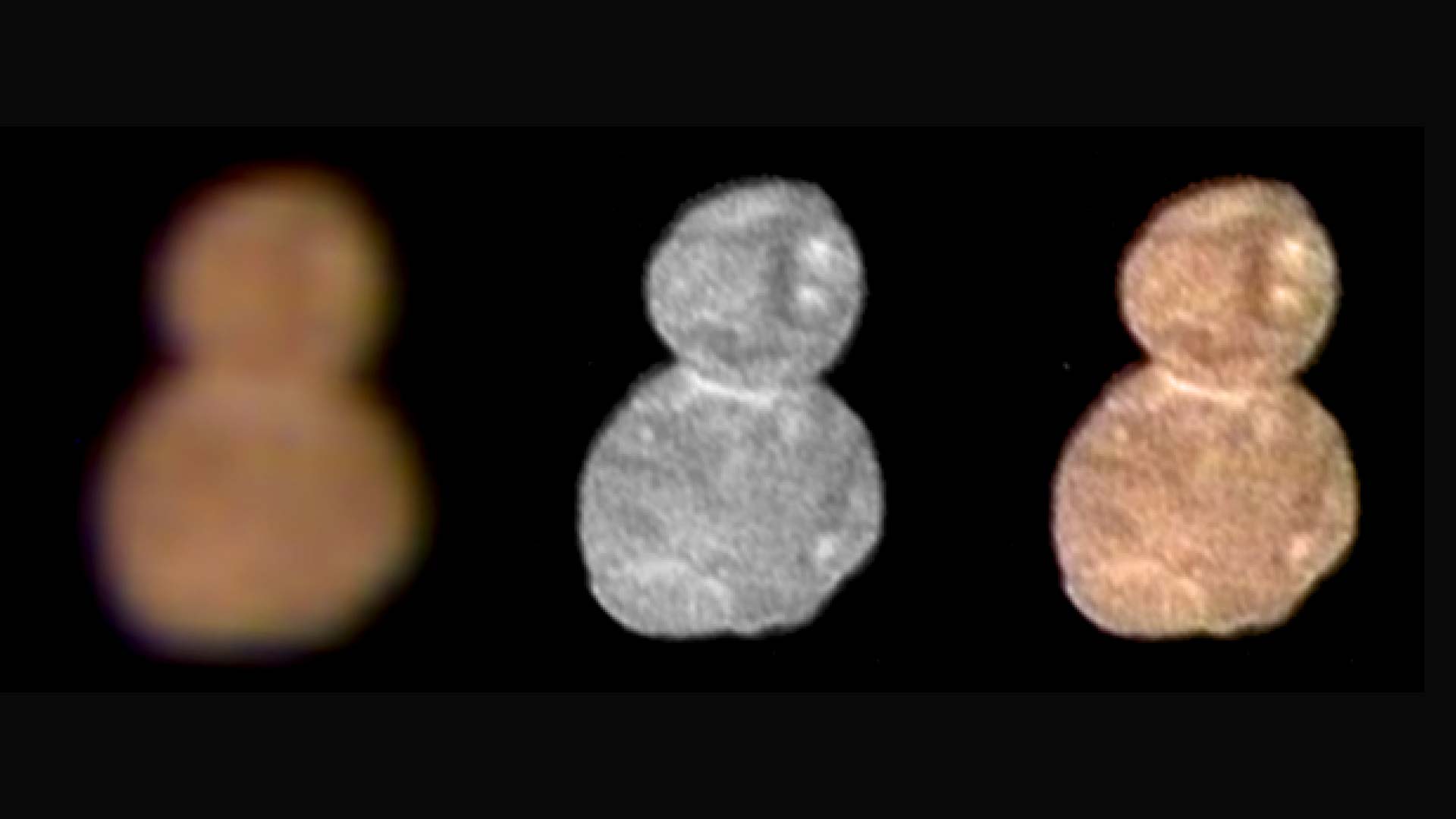 The first color image of Ultima Thule, captured at a distance of 85,000 miles. The image at right shows an overlay of the color image at left on the center image. Learn more.
The first color image of Ultima Thule, captured at a distance of 85,000 miles. The image at right shows an overlay of the color image at left on the center image. Learn more.
Scientists received the first pictures of the planetoid called Ultima Thule Tuesday.
The photos from NASA's New Horizon showed an irregular-shaped rock, and University of Arizona planetary scientist Veronica Bray says the data confirmed suspicions that Ultima Thule looked like a chicken drumstick, or a dirty snowman.
"More scientifically, it is a contact binary, so, two relatively small planetesimals impacted each other at such a low velocity that they didn't destroy one another, they merged," said Bray.
New Horizons made history by beaming back the first close-up pictures of Pluto in 2015. It flew just 3,500 kilometers past Ultima Thule. Mission controllers say the craft still has enough fuel to zoom by another object in the yet-unexplored Kuiper Belt, on the edge of the solar system.
In the early hours of New Year’s Day, @NASANewHorizons flew past #UltimaThule, an object located in a region of primordial objects 1 billion miles past Pluto. Join us live from @JHUAPL today at 2pm ET as we explore the latest science from the spacecraft: https://t.co/oJKHgKpQjH pic.twitter.com/6IMiS0XGNt
— NASA (@NASA) January 2, 2019

By submitting your comments, you hereby give AZPM the right to post your comments and potentially use them in any other form of media operated by this institution.